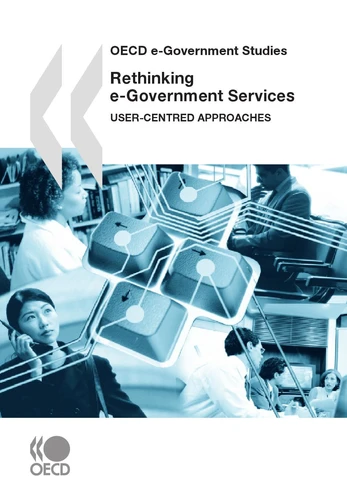Rethinking e - Government Services. User - Centred Approaches
Par :Formats :
Disponible dans votre compte client Decitre ou Furet du Nord dès validation de votre commande. Le format Multi-format est :
- Pour les liseuses autres que Vivlio, vous devez utiliser le logiciel Adobe Digital Edition. Non compatible avec la lecture sur les liseuses Kindle, Remarkable et Sony
 , qui est-ce ?
, qui est-ce ?Notre partenaire de plateforme de lecture numérique où vous retrouverez l'ensemble de vos ebooks gratuitement
Pour en savoir plus sur nos ebooks, consultez notre aide en ligne ici
- Nombre de pages240
- FormatMulti-format
- ISBN978-92-64-05941-2
- EAN9789264059412
- Date de parution02/10/2009
- Protection num.NC
- Infos supplémentairesMulti-format incluant PDF avec W...
- ÉditeurOECD
Résumé
Expecting substantial savings and improved public services-a trend further accentuated by the financial and economic crisis beginning in 2008-OECD countries have invested in the development of e-government services over the past 10-15 years. However, despite the initial exceptional take-up, governments later saw low adoption and low use of e-government services which are still far from satisfactory today.
This report gives a broad description of the shift in governments' focus on e-government development- from a government-centric to a user-centric approach.
It gives a comprehensive overview of challenges to user take-up of e-government services in OECD countries and of the different types of approaches to improving it. The monitoring and evaluation of user take-up are also discussed, including the existence of formal measurement frameworks. Good practices are presented to illustrate the different concrete approaches used by OECD countries.
It gives a comprehensive overview of challenges to user take-up of e-government services in OECD countries and of the different types of approaches to improving it. The monitoring and evaluation of user take-up are also discussed, including the existence of formal measurement frameworks. Good practices are presented to illustrate the different concrete approaches used by OECD countries.
Expecting substantial savings and improved public services-a trend further accentuated by the financial and economic crisis beginning in 2008-OECD countries have invested in the development of e-government services over the past 10-15 years. However, despite the initial exceptional take-up, governments later saw low adoption and low use of e-government services which are still far from satisfactory today.
This report gives a broad description of the shift in governments' focus on e-government development- from a government-centric to a user-centric approach.
It gives a comprehensive overview of challenges to user take-up of e-government services in OECD countries and of the different types of approaches to improving it. The monitoring and evaluation of user take-up are also discussed, including the existence of formal measurement frameworks. Good practices are presented to illustrate the different concrete approaches used by OECD countries.
It gives a comprehensive overview of challenges to user take-up of e-government services in OECD countries and of the different types of approaches to improving it. The monitoring and evaluation of user take-up are also discussed, including the existence of formal measurement frameworks. Good practices are presented to illustrate the different concrete approaches used by OECD countries.


















